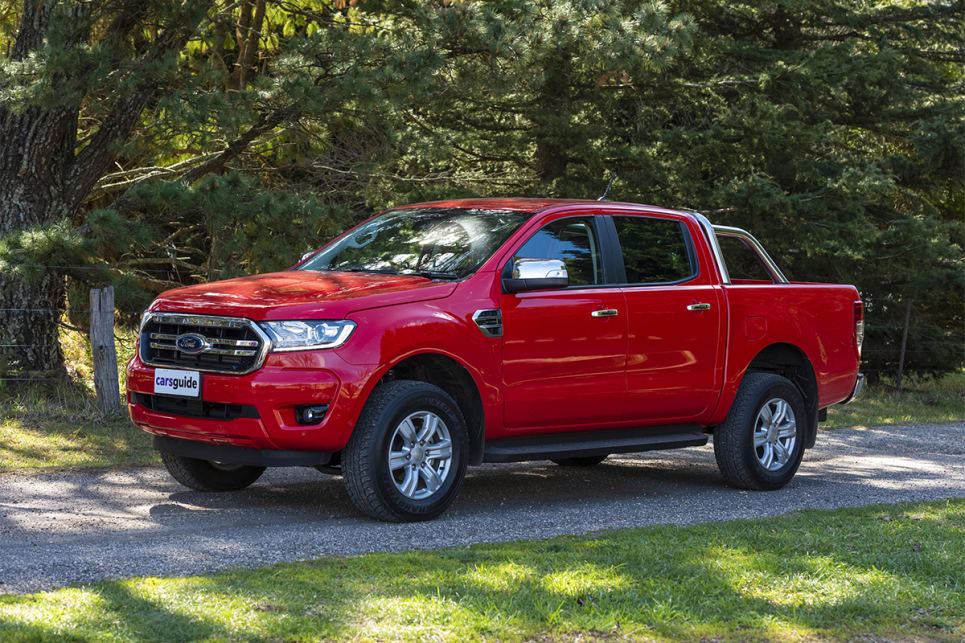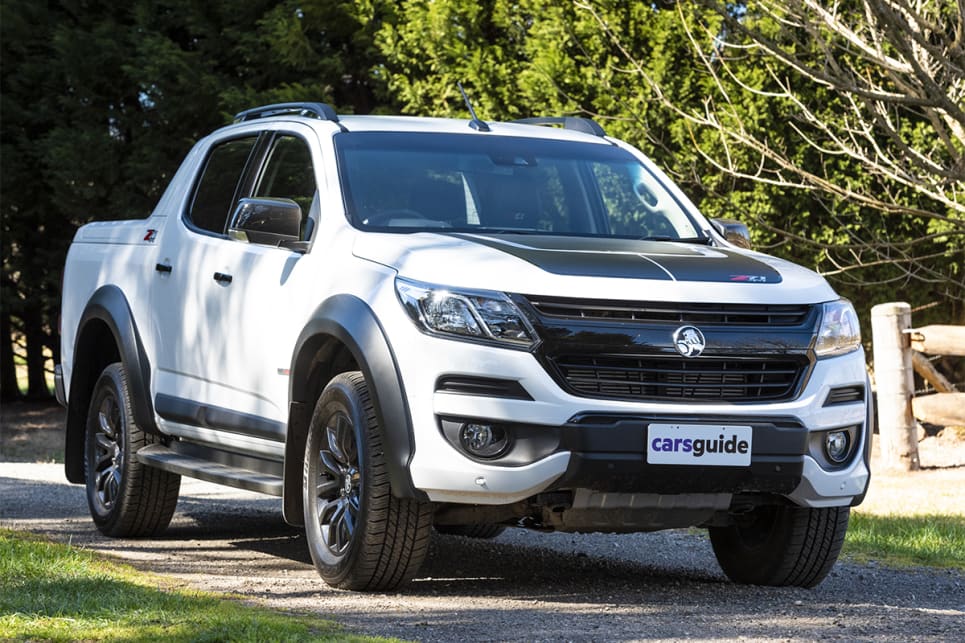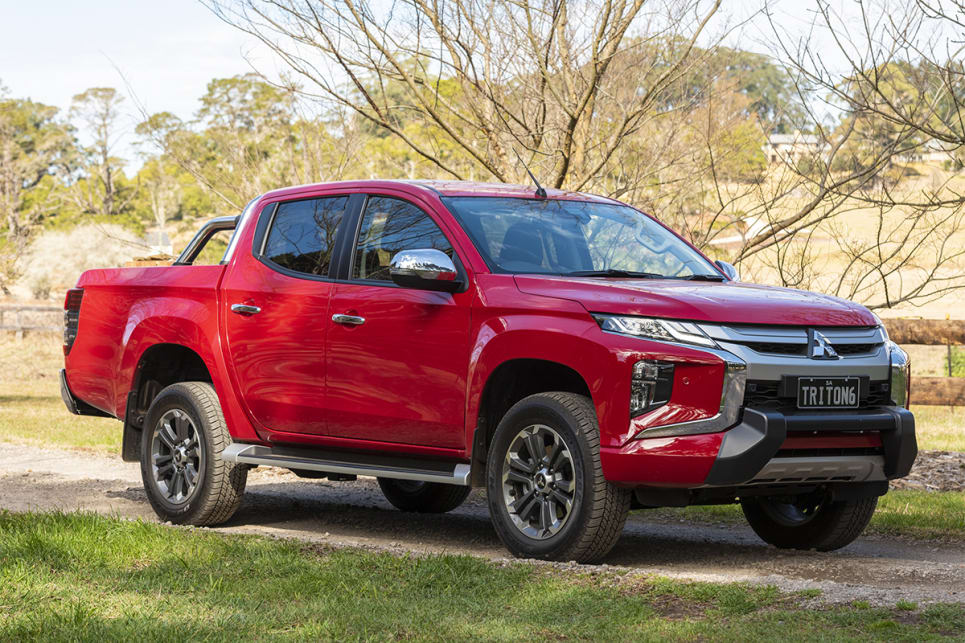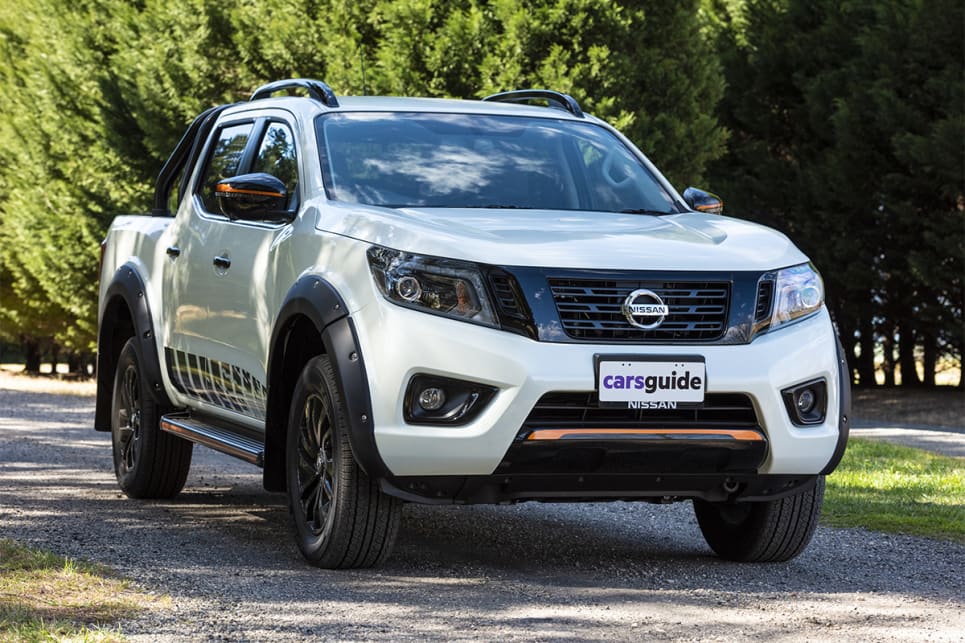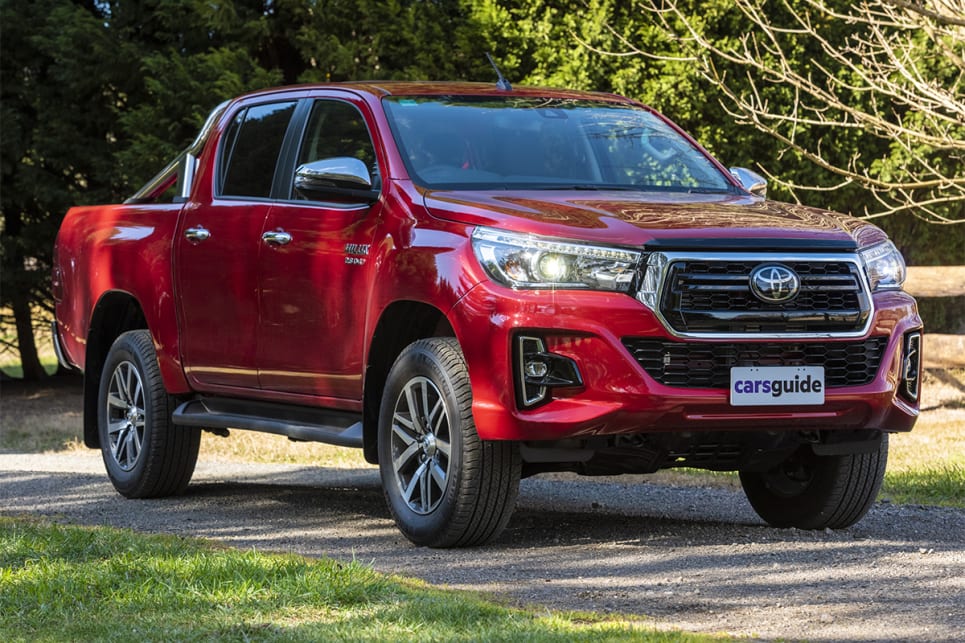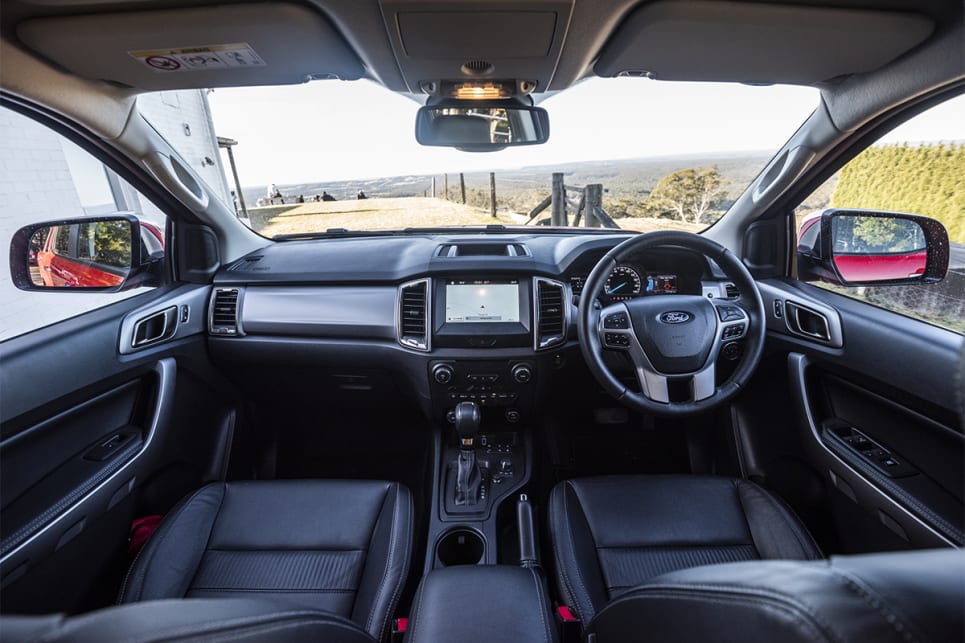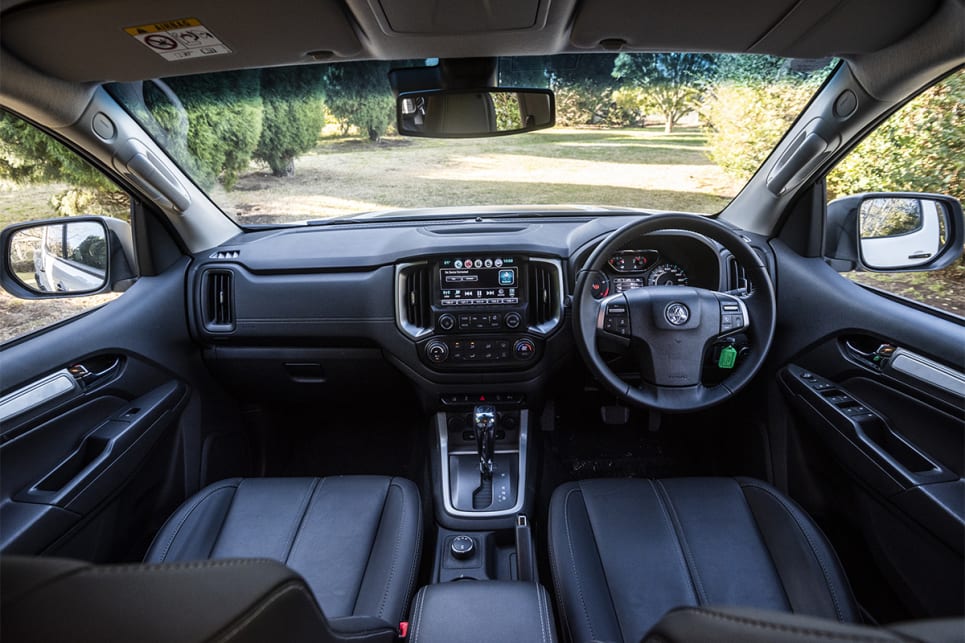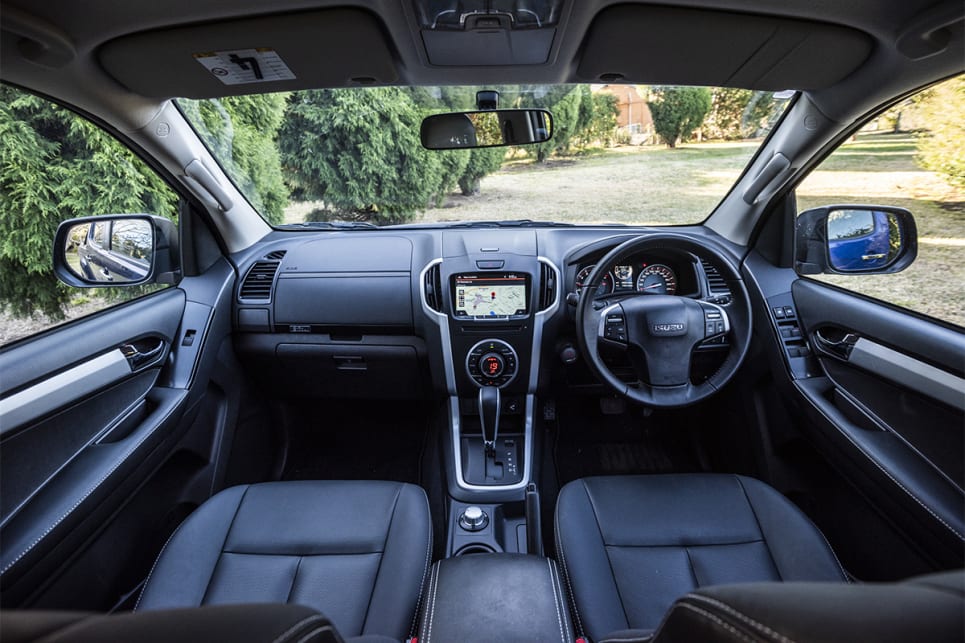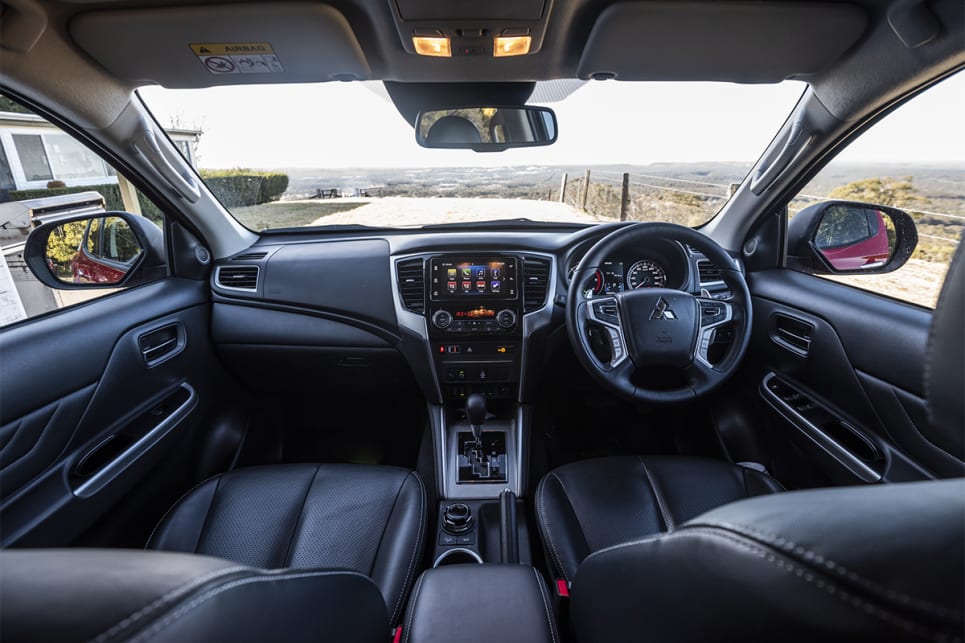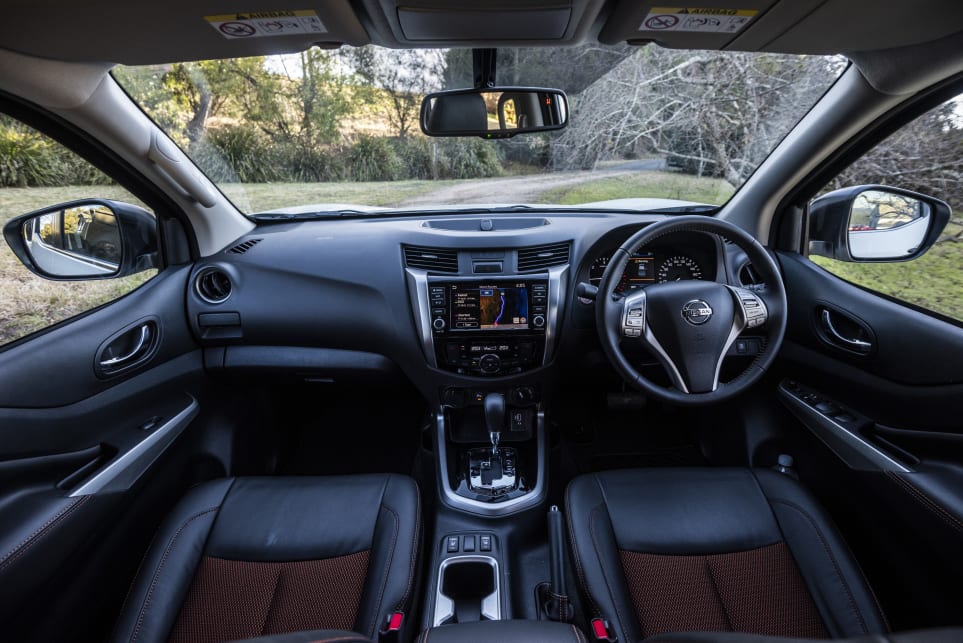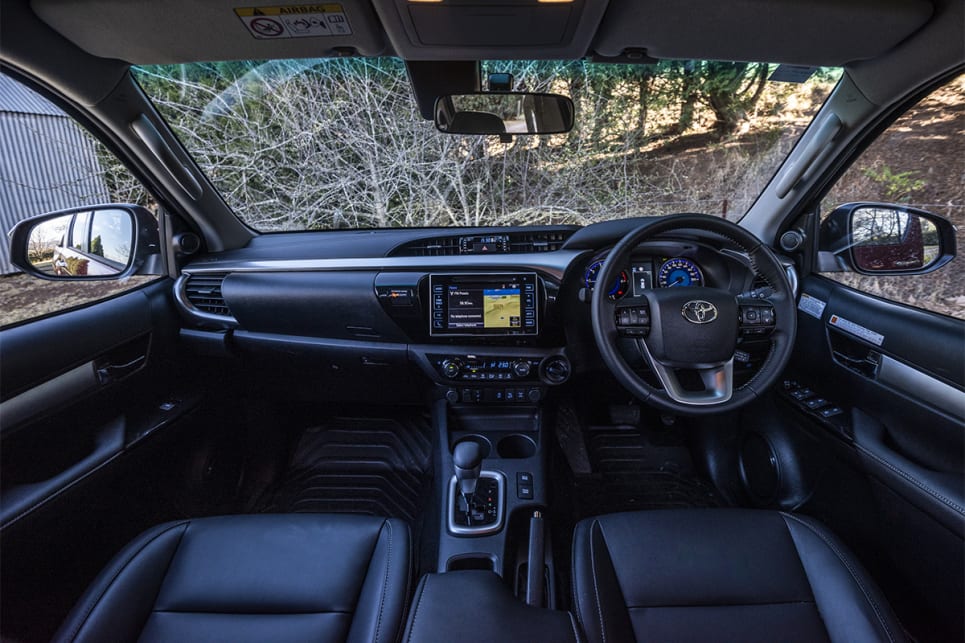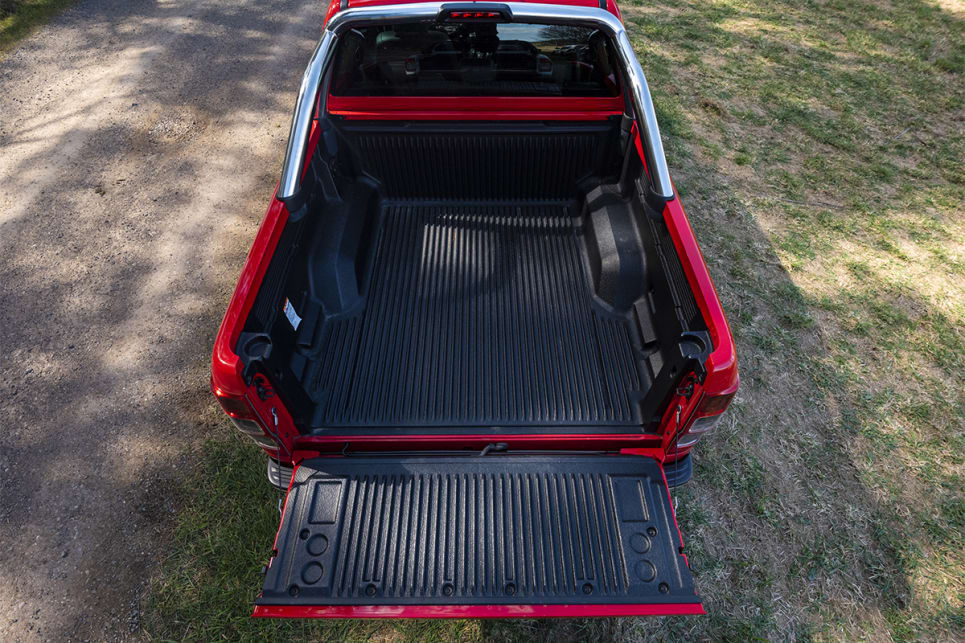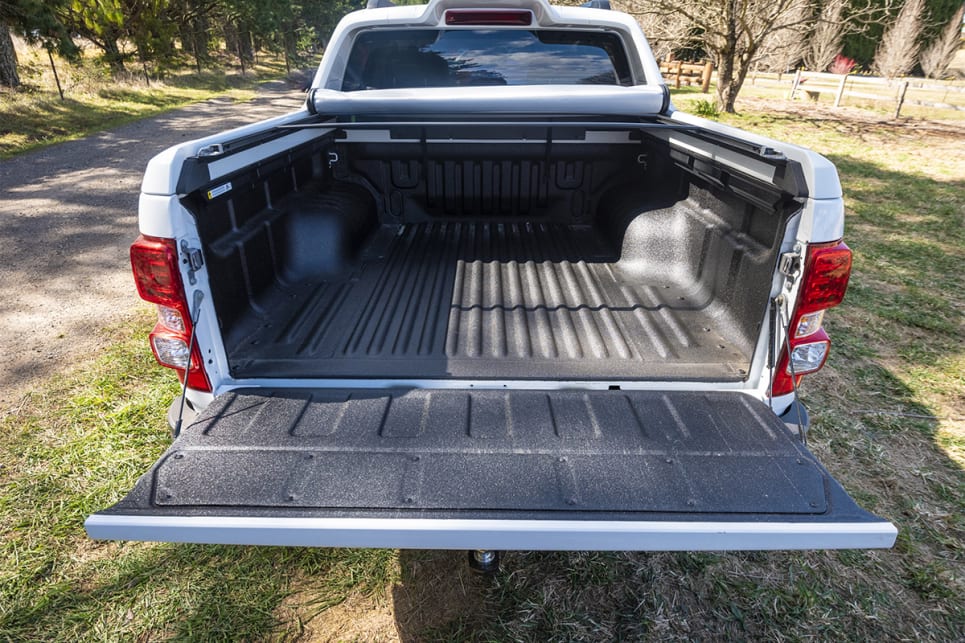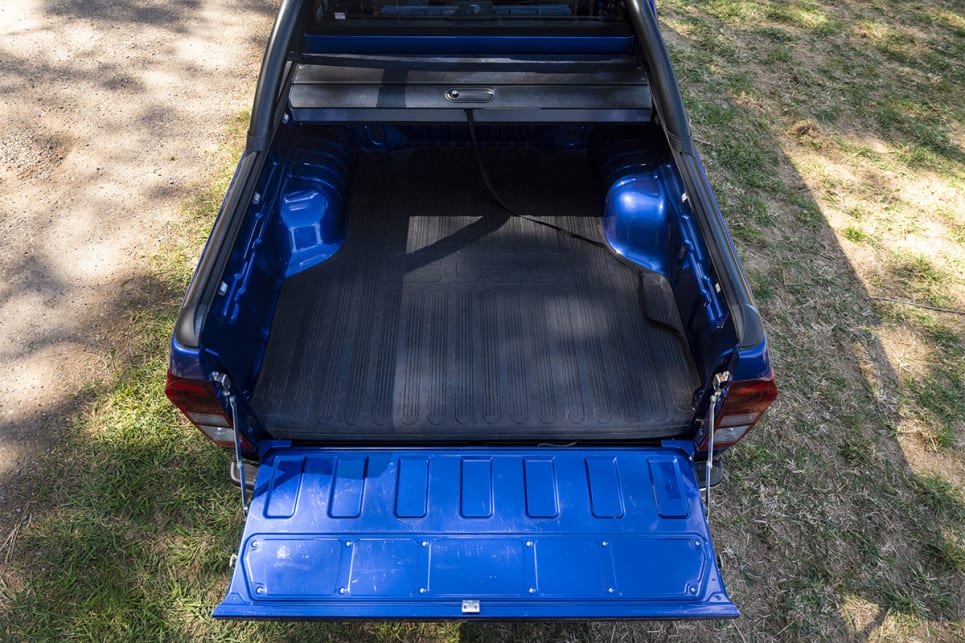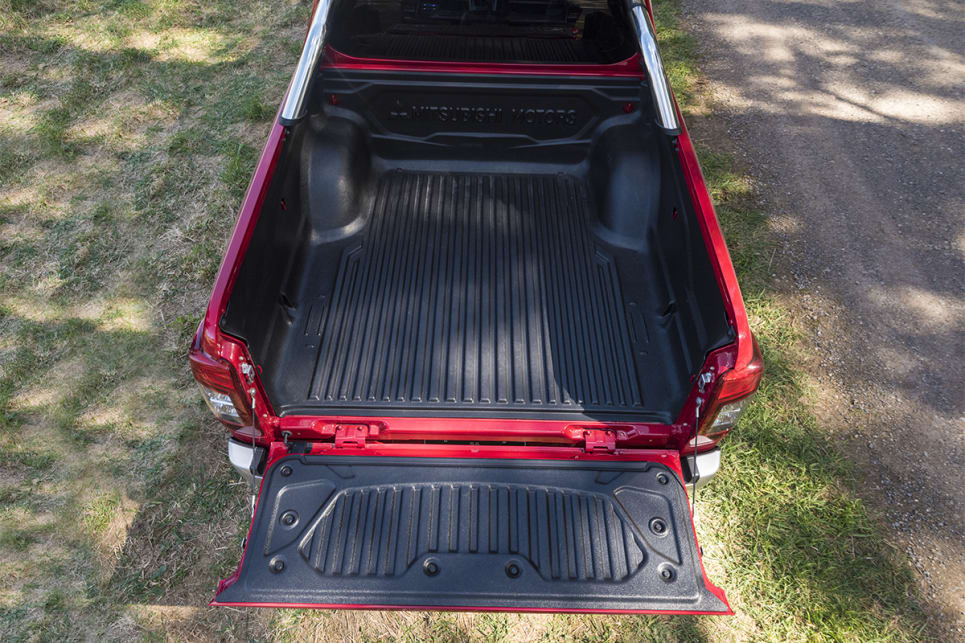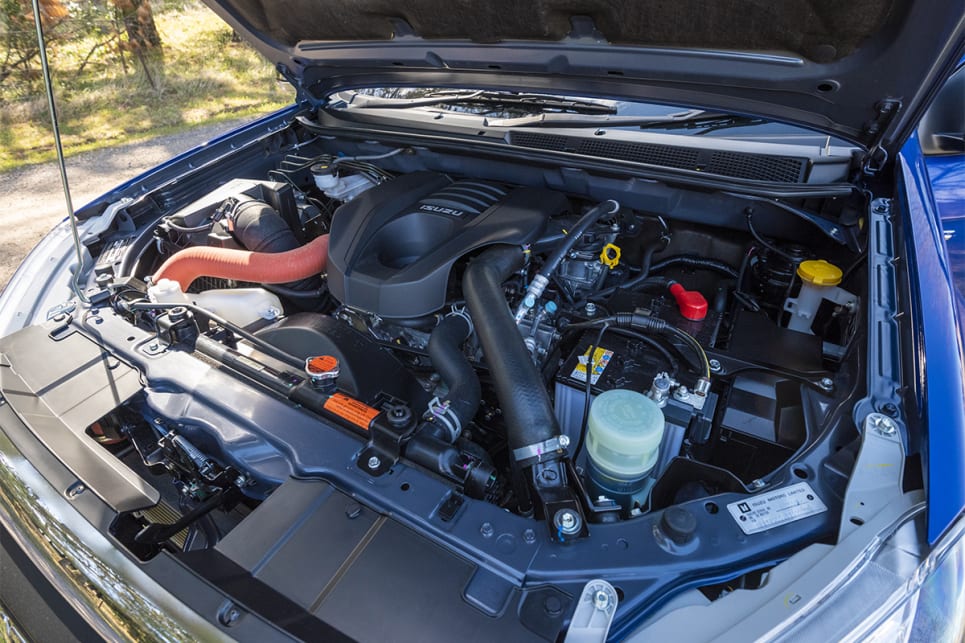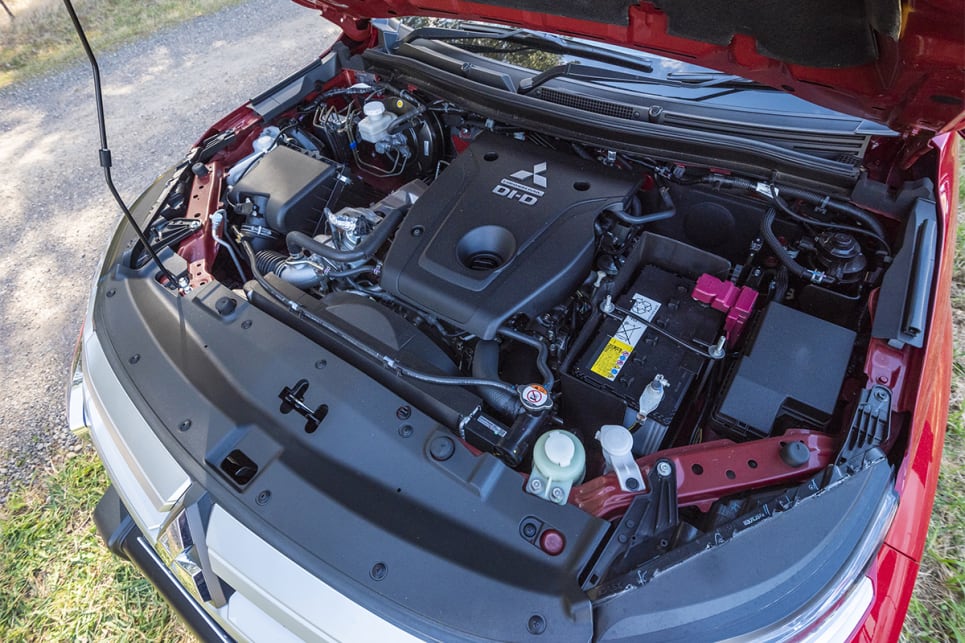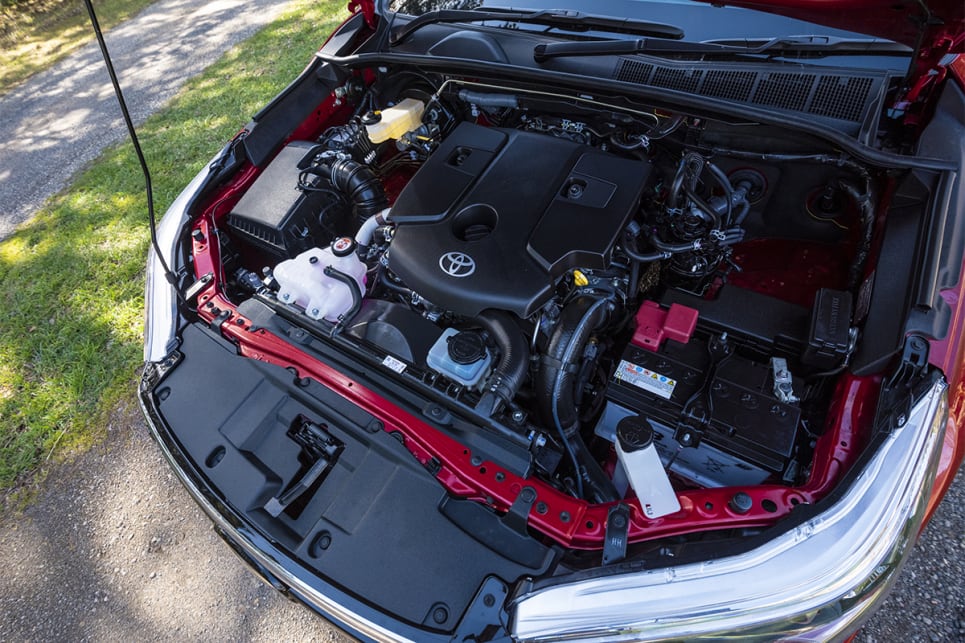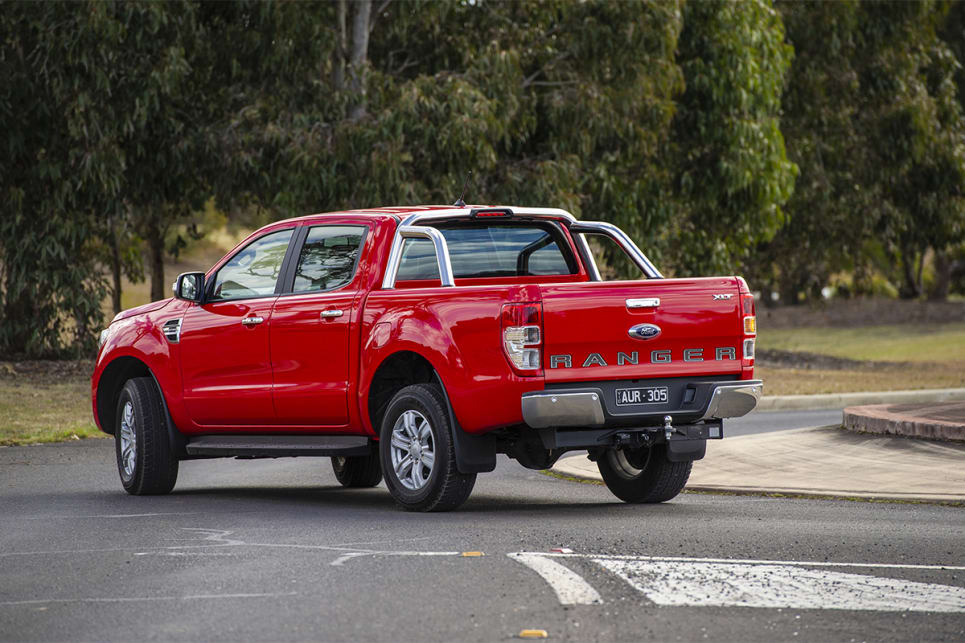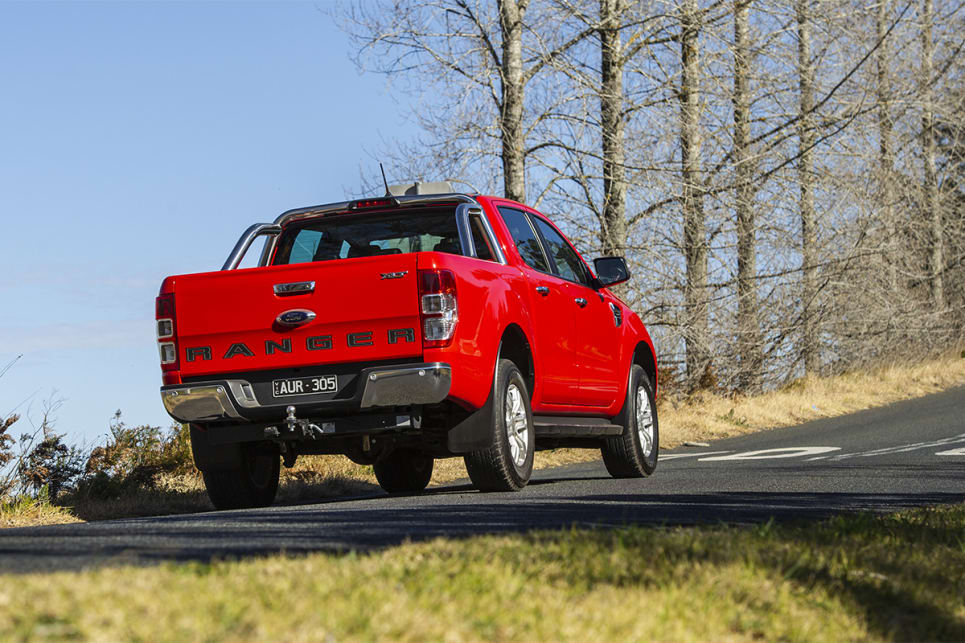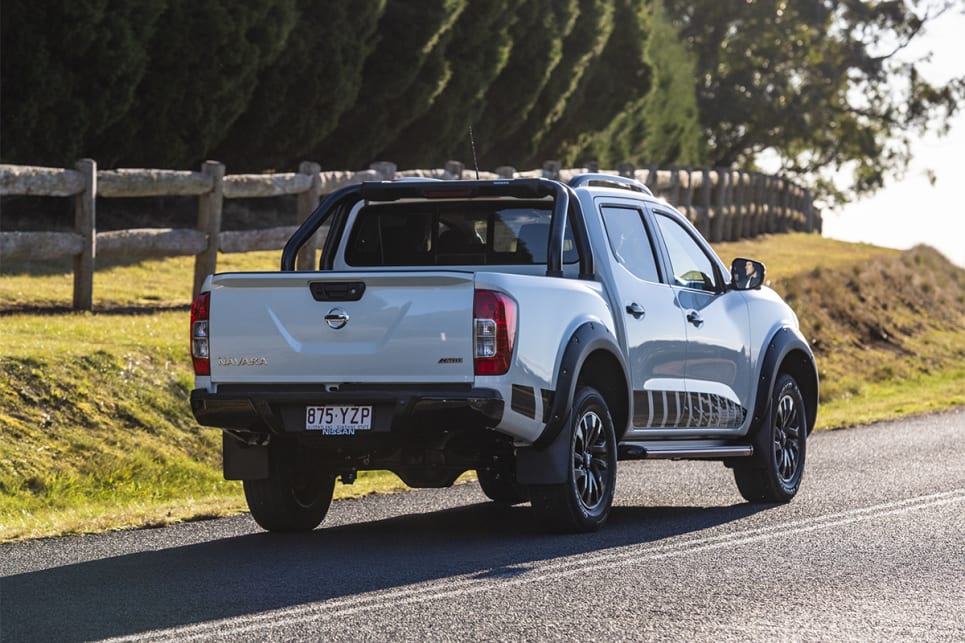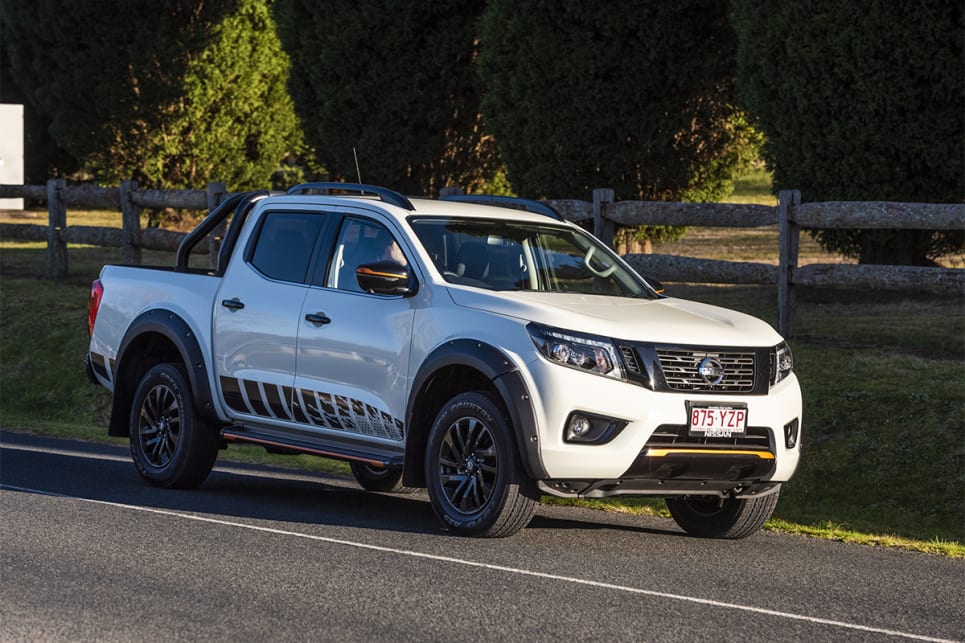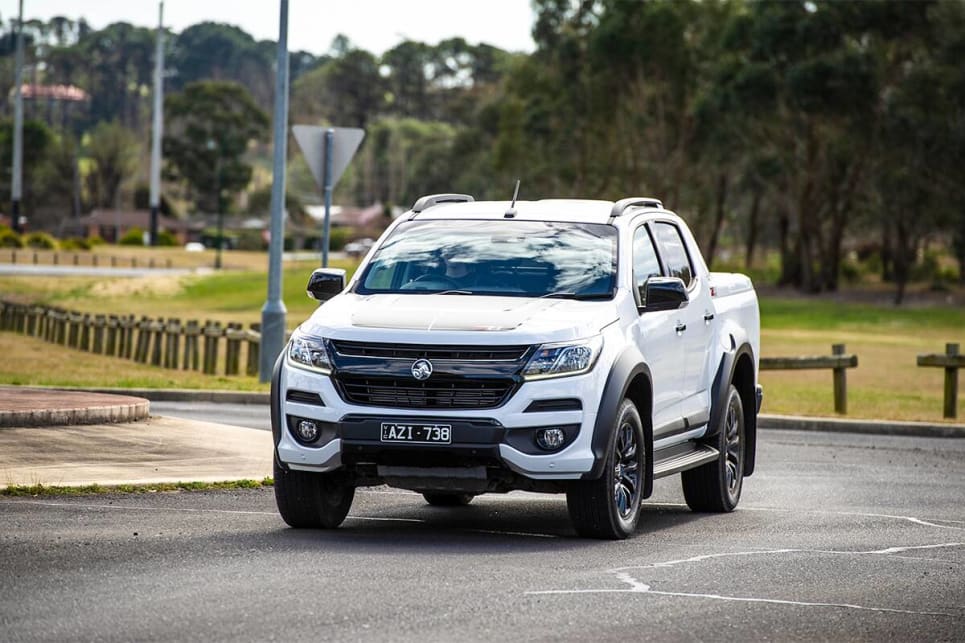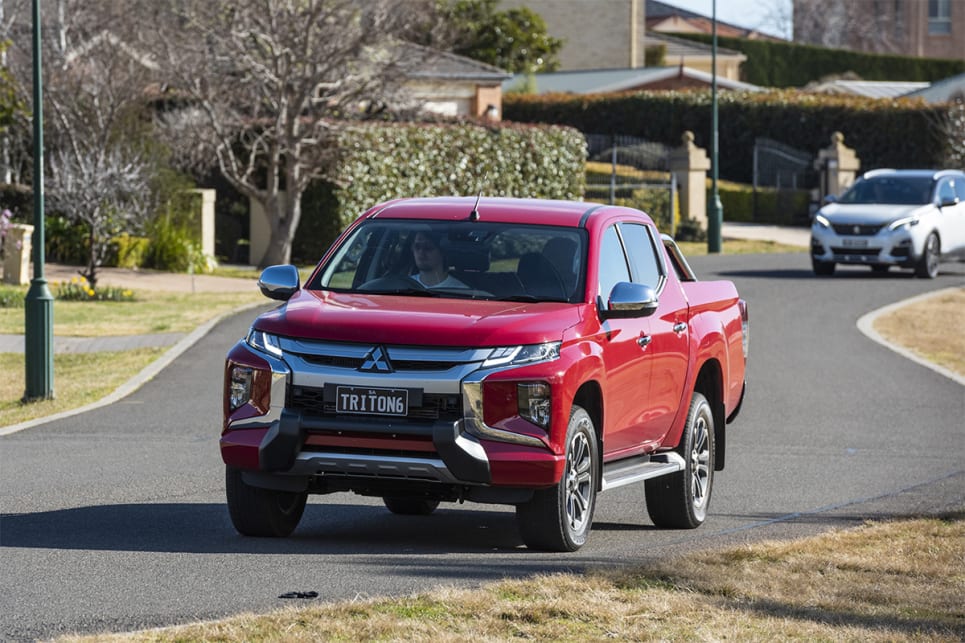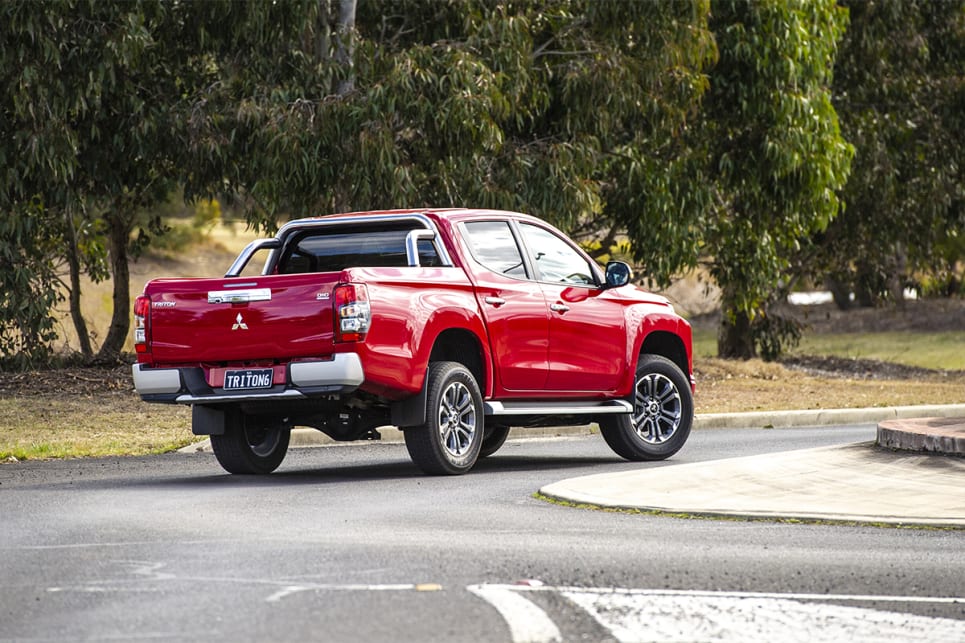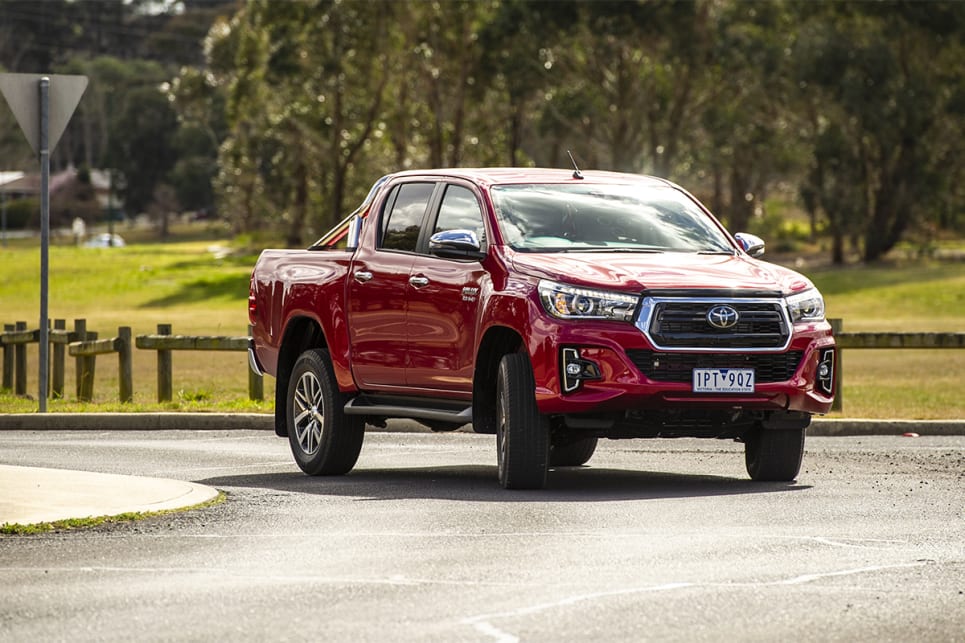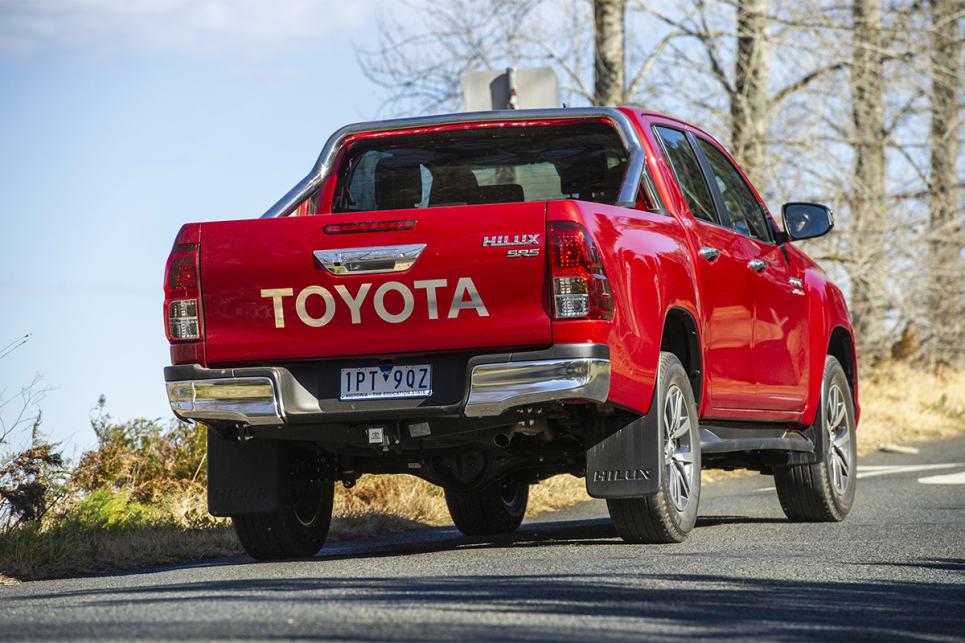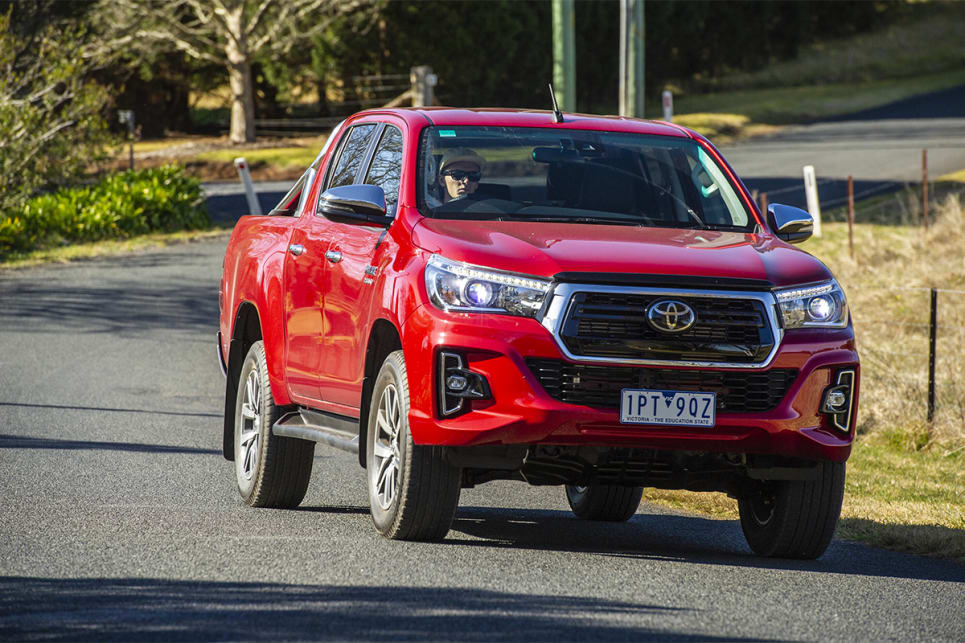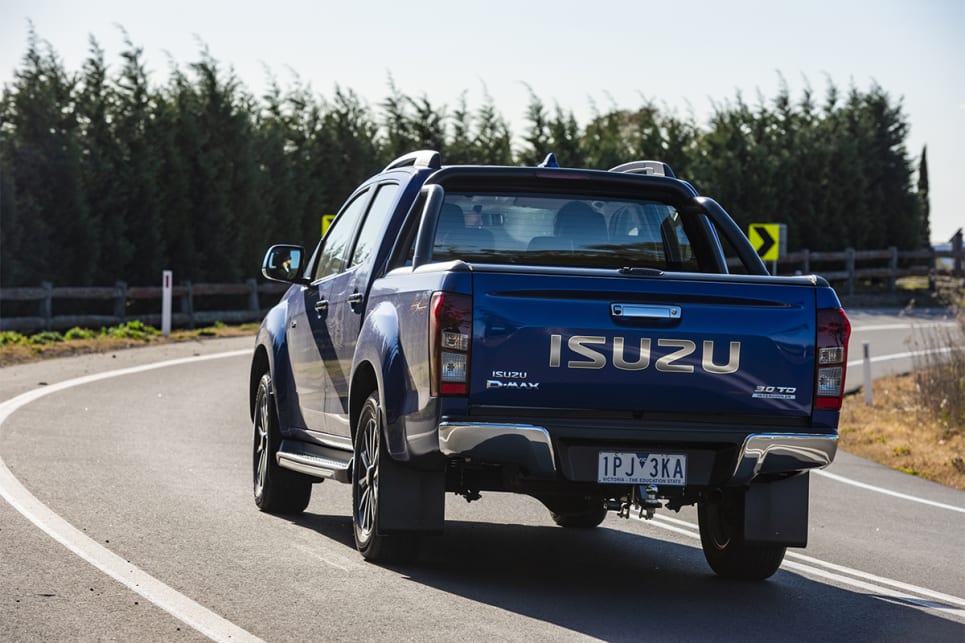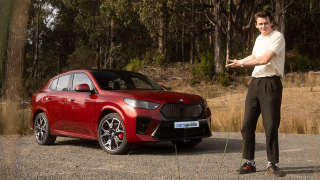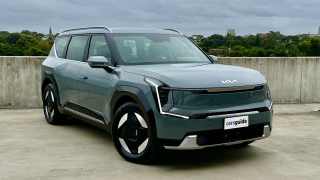They're all decent off-roaders in their own right so we took them on a mix of terrain to give us a clear indication of how well they'd go in the rough stuff.
Our tracks included gravel, deep ruts, mud holes, rocky climbs and more. Every ute here is a four-wheel drive with a low-range transfer case.
The Colorado Z71 has a limited-slip diff, and the rest have diff locks – except the D-Max. We avoided using the diff locks in order to keep the playing field as level as possible.
They all seem reasonably close to each other in terms of off-road capability – well, on paper at least – but, as is often the case, the real world can shake up expectations. Here are the specs you need to know:
| | Ford Ranger XLT Bi-turbo | Holden Colorado Z71 | Isuzu D-Max LS-T | Mitsubishi Triton GLS Premium | Nissan Navara N-Trek | Toyota HiLux SR5 |
| Approach angle (desgrees) | 29 | 28.3 | 30 | 27.5 | 33.2 | 30 |
| Departure angle (degrees) | 21 (to towbar) | 23.1 | 22.7 | 23 | 28.2 | 20 |
| Ramp-over angle (degrees) | 25 | 22.1 | 22.3 | 25 | 24.7 | 25 |
| Ground clearance (mm) | 237 | 215 | 235 | 220 | 228 | 216 |
| Wading depth (mm) | 800 | 600 | Not stated | 500 | Not stated | 700 |
| Four wheel drive system | Selectable four-wheel drive | Selectable four-wheel drive | Selectable four-wheel drive | Selectable four-wheel drive | Selectable four-wheel drive | Selectable four-wheel drive |
| Rear diff lock | Electronic differential lock | Electronic differential lock | No | Yes | Yes | Yes |
| Limited slip differential | No | Yes | No | No | Yes | No |
| Power steering | Electric | Hydraulic | Hydraulic | Hydraulic | Hydraulic | Hydraulic |
| Turning circle (m) | 12.7 | 12.7 | 12.0 | 11.8 | 12.4 | 11.8 |
| Off road drive modes | No | No | No | Snow/mud, gravel, sand, rock | No | No |
It must be noted though that all of these vehicles were on standard road-biased tyres and standard suspension, a less-than-ideal combination on tough terrain.
Each ute is listed below from best to worst.
It may be a surprise to some that the HiLux SR5 tops this mob as the most capable off-roader.
The HiLux has many fans and lots of haters, but its tough-terrain capability is simply very impressive. Its levels of refinement and comfort never come anywhere close to matching those of the Ranger's while driving rough terrain but it always feels the most capable.
It's never been the most refined ute around but the HiLux makes up for that by being an all-round reliable and capable ute. And while it doesn't have the highest torque figure here at 450Nm – the Ranger and Z71 both have more at 500Nm – the HiLux feels like it always gets every bit of its torque to the dirt at the right time.
-
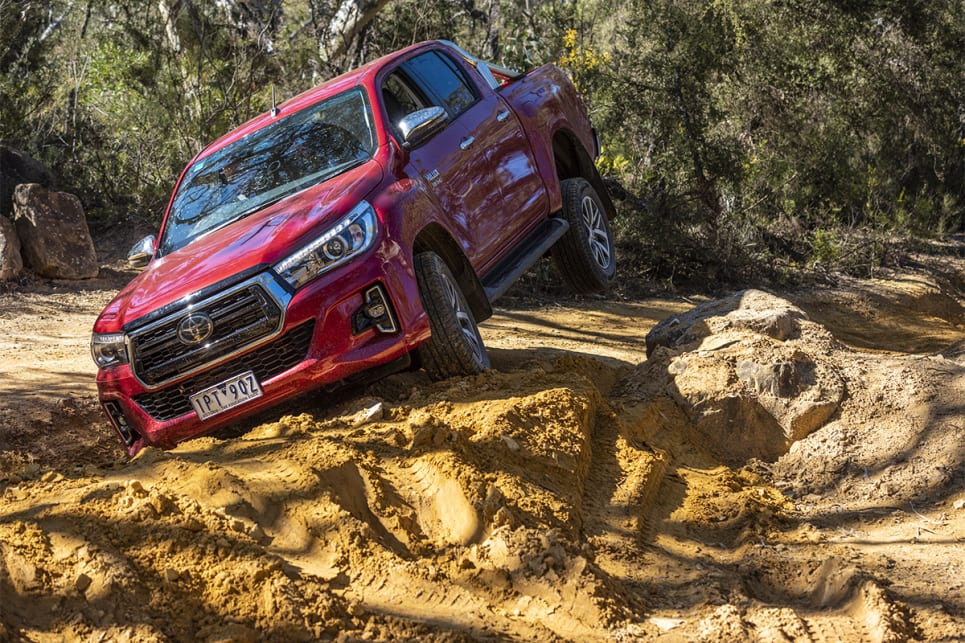 With bush-ready low-range gearing, a tractable turbo-diesel engine and a brutally effective 4WD set-up, the HiLux once again proved its superiority off-road.
With bush-ready low-range gearing, a tractable turbo-diesel engine and a brutally effective 4WD set-up, the HiLux once again proved its superiority off-road.
-
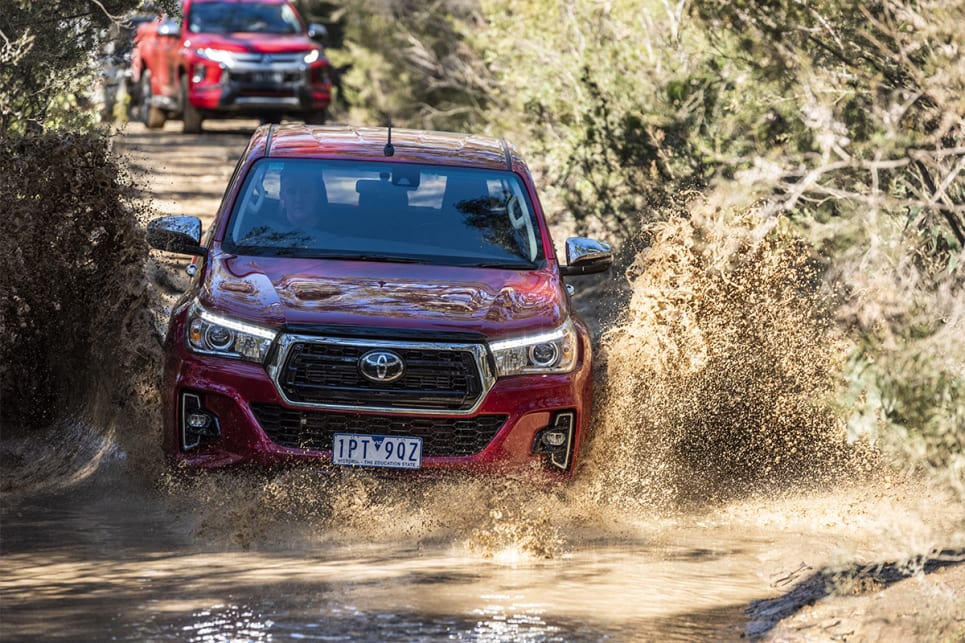 It's never been the most refined ute around but the HiLux makes up for that by being an all-round reliable and capable ute.
It's never been the most refined ute around but the HiLux makes up for that by being an all-round reliable and capable ute.
-
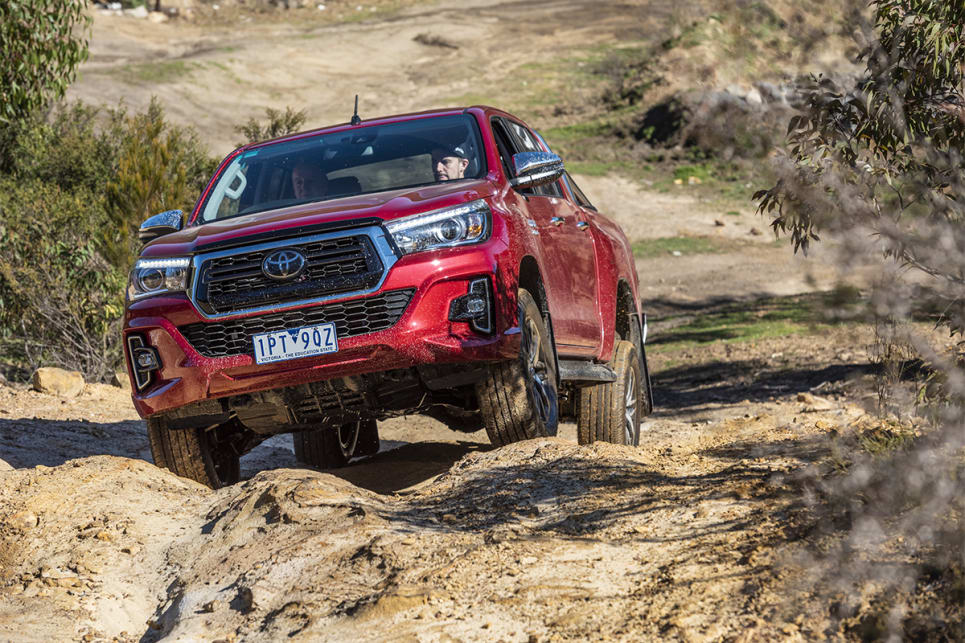 On our set-piece rocky hill-climb there was minimal wheel-spin and the SR5 generally always exhibits a nice linear throttle progression.
On our set-piece rocky hill-climb there was minimal wheel-spin and the SR5 generally always exhibits a nice linear throttle progression.
On our set-piece rocky hill-climb there was minimal wheel-spin and the SR5 generally always exhibits a nice linear throttle progression.
Hill descent control and engine braking combine to maintain a steady and safe momentum on sharp, steep declines.
There are serious issues around Toyota's Diesel Particulate Filter, and the HiLux's suspension consistently yields a harsh ride – never grotesque though – but with bush-ready low-range gearing, a tractable turbo-diesel engine and a brutally effective 4WD set-up, this ute once again proved its superiority off-road.
The Ranger, a good mix of comfort and capability, was next best.
Its tyres regularly let it down, failing to grab ground at crucial points on short steep uphills sections, but its suspension is always supple and its quietly efficient terrain-tackling electronics always do a great job of being highly effective and not at all intrusive.
Hill descent control engages at a nice regulated sustained speed and when driving the Ranger you always feel in control.
It tackled everything with regulated and sustained speed – its 2.0-litre twin-turbo engine never feels stressed – and it also had the best steering: consistently well weighted, even at low speeds.
-
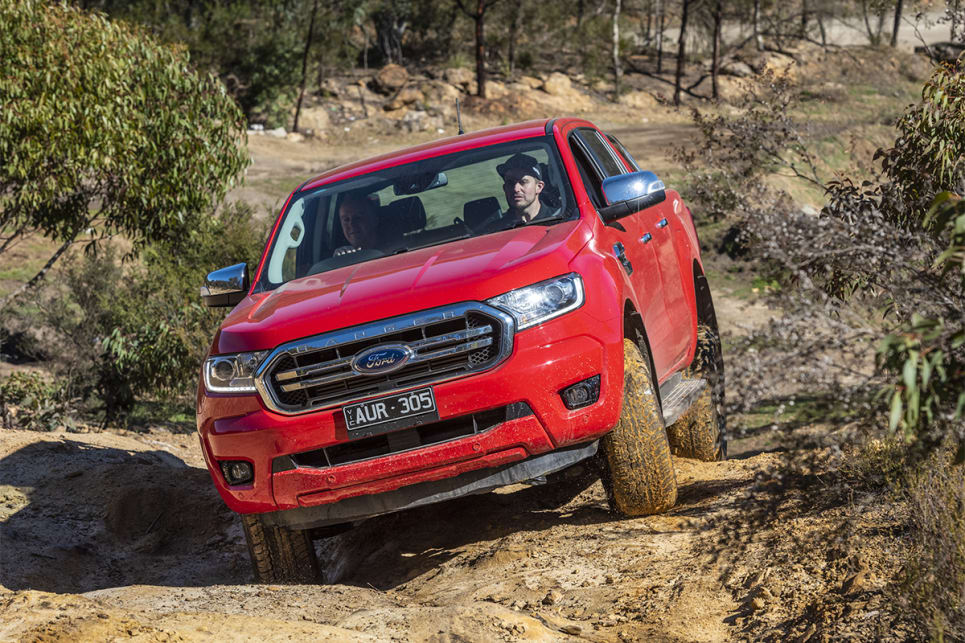 The tyres regularly let the Ranger down, failing to grab ground at crucial points on short steep uphills sections.
The tyres regularly let the Ranger down, failing to grab ground at crucial points on short steep uphills sections.
-
 The Ranger tackled everything with regulated and sustained speed.
The Ranger tackled everything with regulated and sustained speed.
-
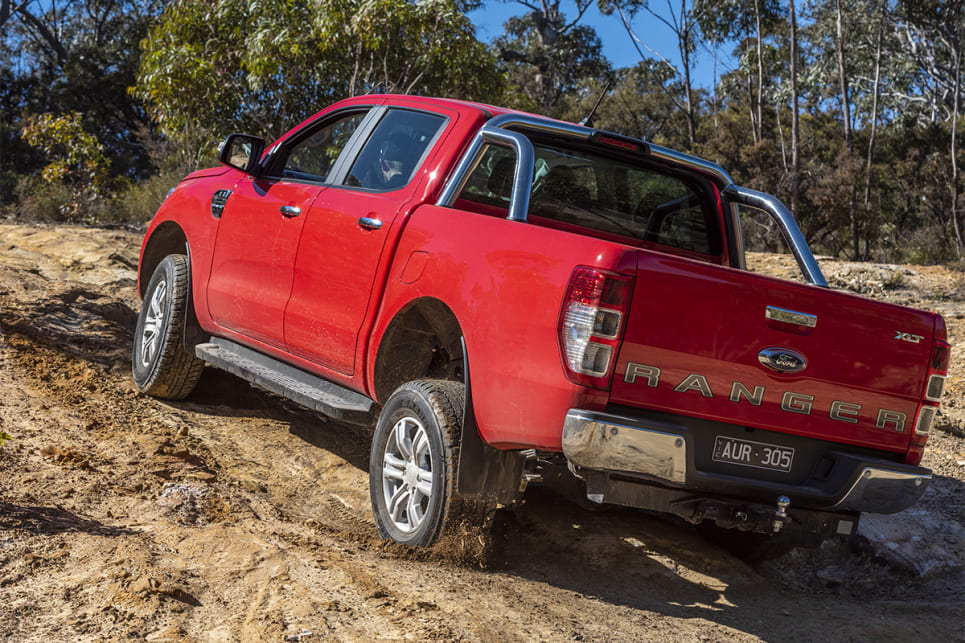 The Ranger with a good mix of comfort and capability was second behind the HiLux.
The Ranger with a good mix of comfort and capability was second behind the HiLux.
For such a big unit, the biggest here at 2197kg, the Ranger always feels so easy to manoeuvre on the tracks.
Negatives: The Ranger is much better than its tyres – they're the first things you'd sort out – and it was a bit fidgety to get out of 4WD Low.
But while it had a lot of positives going for it, the Ranger often feels one or two steps removed from the actual driving experience – and it wasn't the most capable 4WD here.
The third most capable ute here, the Navara N-Trek, is solid and reliable without ever being truly special.
It's light (the lightest here at 1993kg) and gutsy, and the N-Trek did the climbs and downhills well – with controlled sustained momentum as well as group-best approach and departure angles (33.3 and 28.2 degrees respectively) aiding its cause.
Also, its suspension was pretty impressive at low and high speeds, smoothing out any sharper irregularities in the terrain – even if we did pitch into them on purpose with a fair bit of gusto.
-
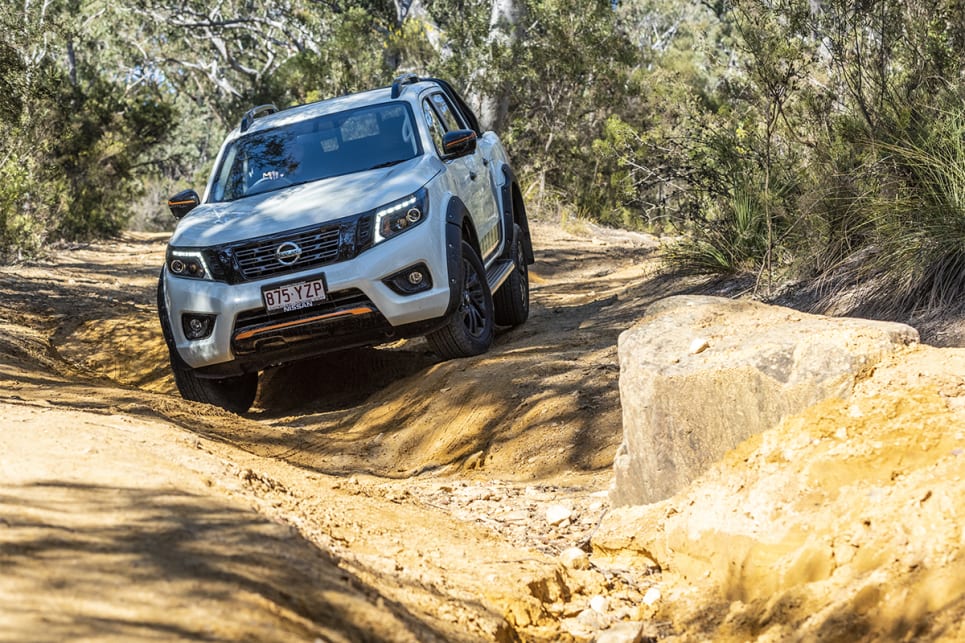 The suspension was pretty impressive at low and high speeds, smoothing out any sharper irregularities in the terrain.
The suspension was pretty impressive at low and high speeds, smoothing out any sharper irregularities in the terrain.
-
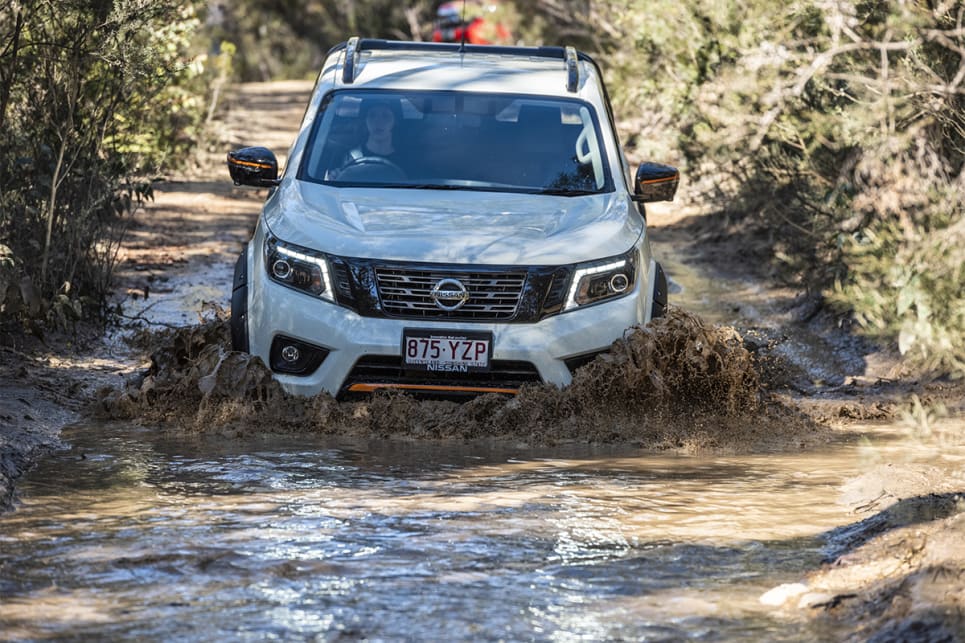 The Navara N-Trek, is solid and reliable without ever being truly special.
The Navara N-Trek, is solid and reliable without ever being truly special.
-
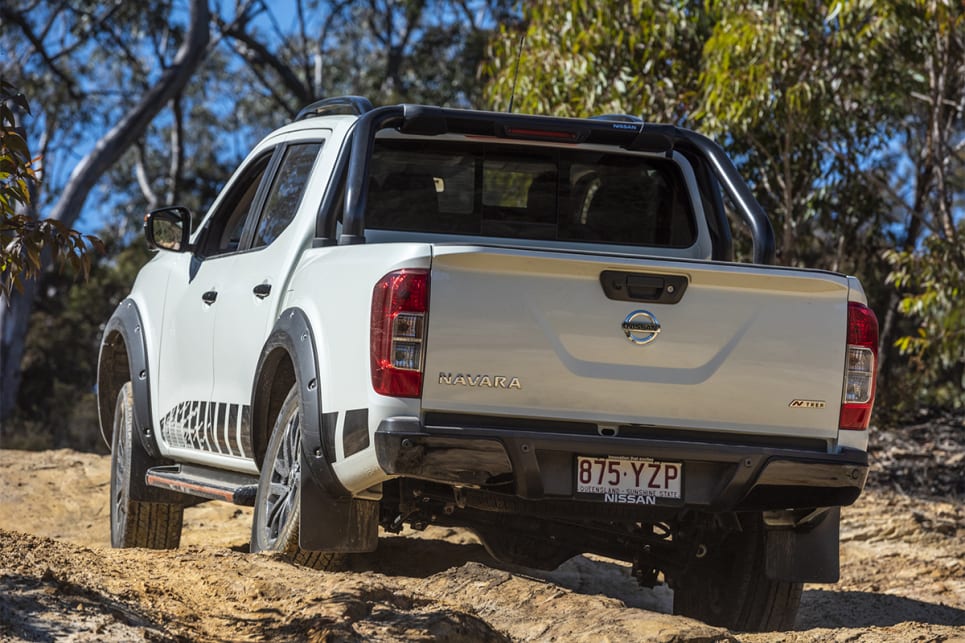 The N-Trek did the climbs and downhills well – with controlled sustained momentum as well as group-best approach and departure angles aiding its cause.
The N-Trek did the climbs and downhills well – with controlled sustained momentum as well as group-best approach and departure angles aiding its cause.
In terms of steering, it never felt as lively as the Ranger, but it's not as ponderously heavy as the D-Max. It does take a bit more effort to keep it on track than it does to keep some of the utes here pointed in the right direction.
Yep, it's a bit noisy – that twin-turbo four-cylinder engine is on the wrong side of raucous at low speeds – and, sure, you had to work a bit harder to steer the N-Trek than some of the other utes, but it's certainly capable.
Next up is the Triton which remains one of the quiet achievers in the workhorse realm.
I'm a big fan of Mitsubishi's Super Select II 4X4 system and it didn't disappoint, being so effective and easy to operate.
Even when driven intentionally along the wrong line up and down rocky hills, the Triton managed to tackle everything with minimal fuss. Mostly. (I say "mostly" because hill descent control did at one stage disengage and 'run away' a bit. My boot may have slipped and blipped the throttle, thus kicking it out of its set speed, but I'll never admit to that.)
-
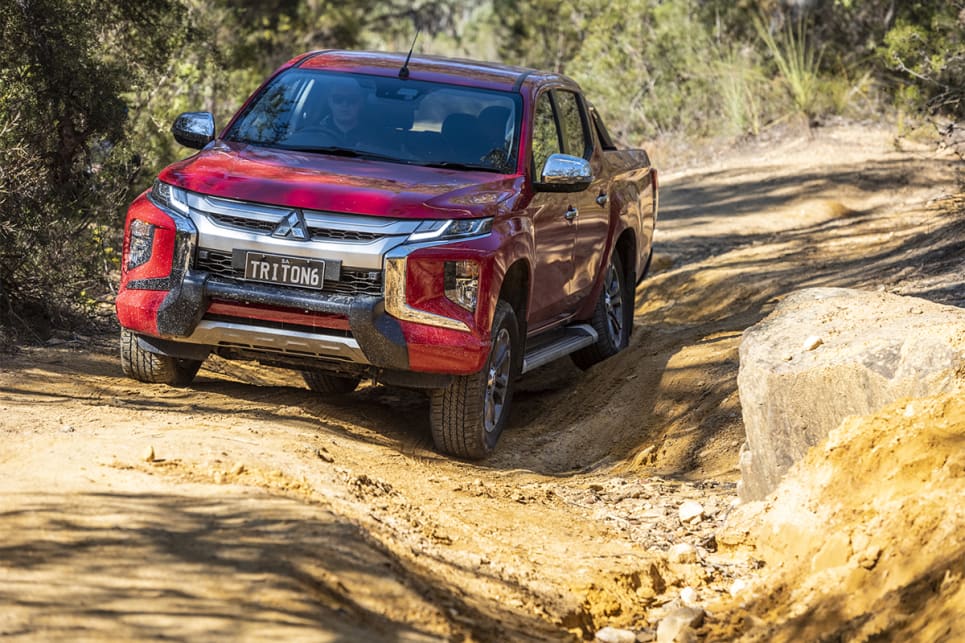 All round, the Triton is pretty dialled in, but it had to work a fraction harder than some of the others here.
All round, the Triton is pretty dialled in, but it had to work a fraction harder than some of the others here.
-
 I'm a big fan of Mitsubishi's Super Select II 4X4 system and it didn't disappoint, being so effective and easy to operate.
I'm a big fan of Mitsubishi's Super Select II 4X4 system and it didn't disappoint, being so effective and easy to operate.
-
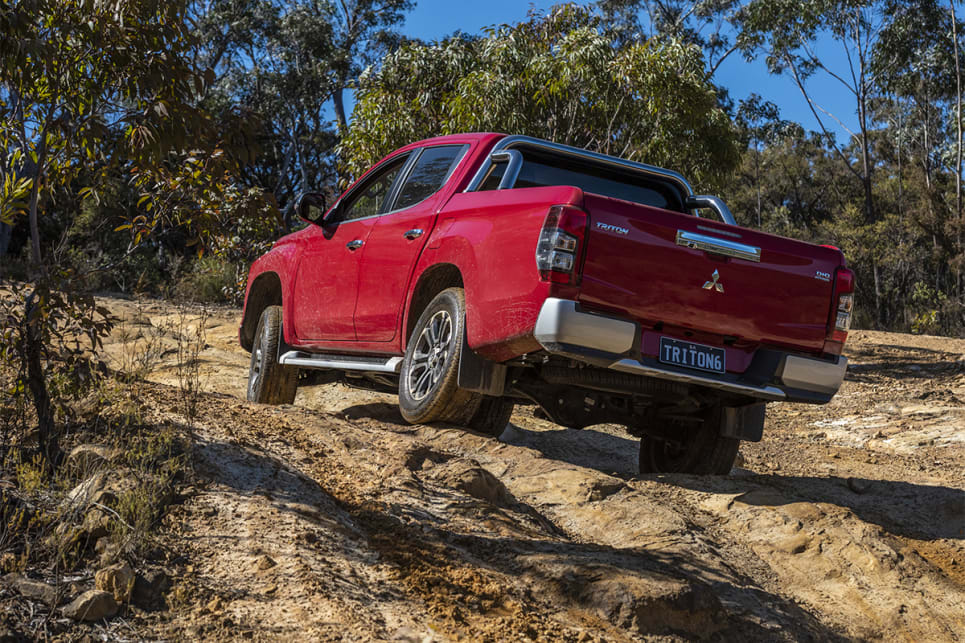 Even when driven intentionally along the wrong line up and down rocky hills, the Triton managed to tackle everything with minimal fuss.
Even when driven intentionally along the wrong line up and down rocky hills, the Triton managed to tackle everything with minimal fuss.
All round, it's pretty dialled in, but it had to work a fraction harder than some of the others here – only a fraction – and it just didn't feel as composed as the Navara and Ranger, or as capable as the HiLux.
Close behind is the Colorado Z71, which was "about 50 times easier than D-Max on the climb", which is what I said, according to a colleague's notes.
"It's heaps better when crossed up," that same colleague said
We spun tyres a bit at the top of one climb, but overall the Z71's engine and electronics were better than the D-Max's.
-
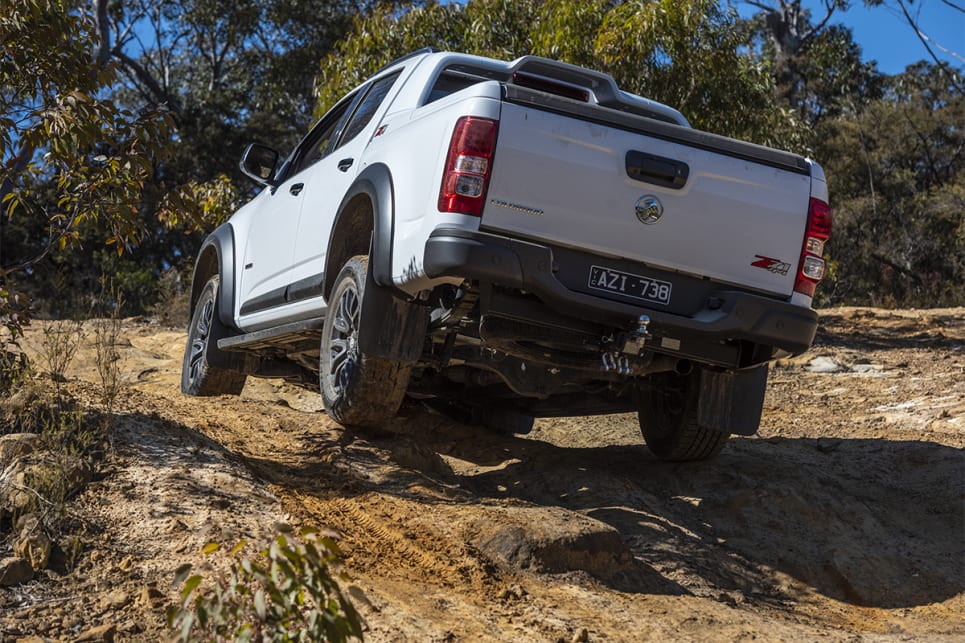 We spun tyres a bit at the top of one climb, but overall the Z71's engine and electronics were better than the D-Max's.
We spun tyres a bit at the top of one climb, but overall the Z71's engine and electronics were better than the D-Max's.
-
 The Colorado Z71 was "about 50 times easier than D-Max on the climb"
The Colorado Z71 was "about 50 times easier than D-Max on the climb"
-
 Steering was also a big improvement over the D-Max's with a more direct feel to it.
Steering was also a big improvement over the D-Max's with a more direct feel to it.
Steering was also a big improvement over the D-Max's with a more direct feel to it.
On our first downhill run, we had some issues with hill descent control – it wouldn't engage – but it was much more controlled the second time around – holding our speed at around 3km/h on a short steep section.
The Z71's suspension didn't soak up bumps as well as some of the others in this mob, tending to really thump in and out of some of the more severe wheel ruts and potholes.
Last but not least is the D-Max. I don't mind the D-Max; there's a lot to like about its straight-forward approach to getting the job done but the fact is: it sometimes doesn't get the job done – especially if that job is tackling hard-core off-road terrain – and if it does get the job done, it has a tougher time than its rivals doing so.
-
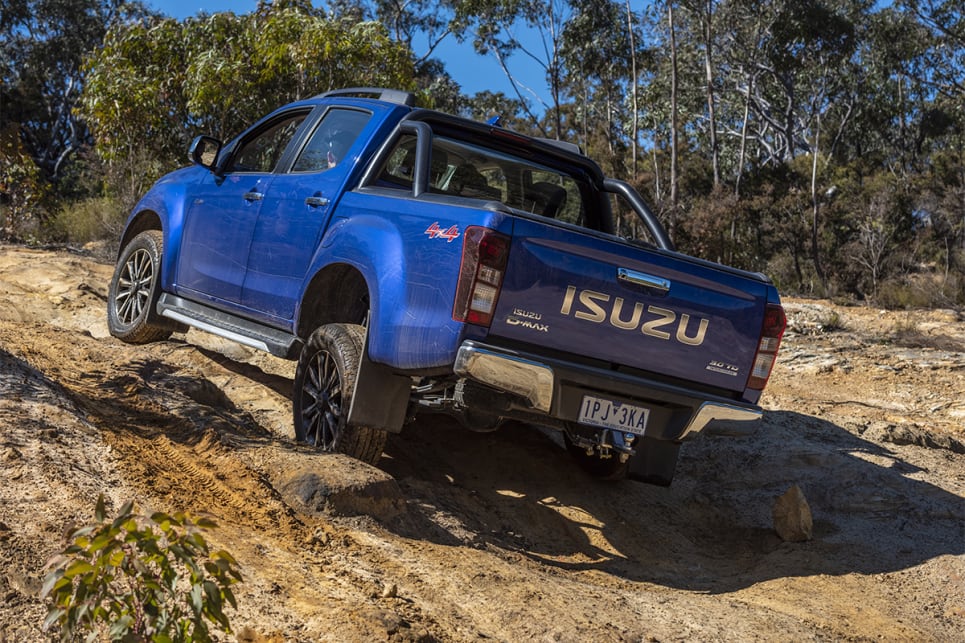 There's a lot to like about the D-Max's straight-forward approach to getting the job done.
There's a lot to like about the D-Max's straight-forward approach to getting the job done.
-
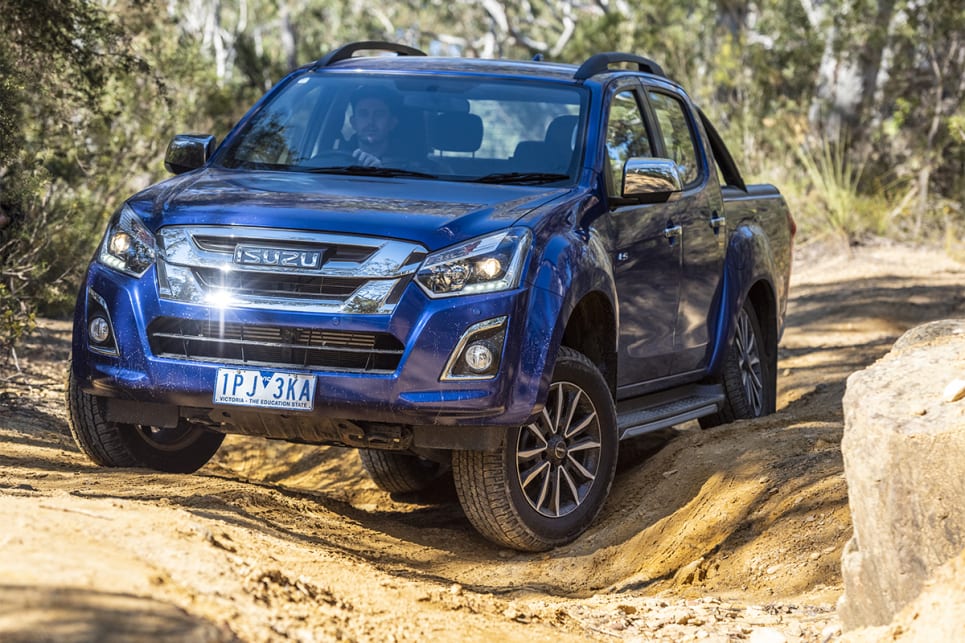 The D-Max's steering was heavy, it felt ponderous, it feels every gram of its weight.
The D-Max's steering was heavy, it felt ponderous, it feels every gram of its weight.
-
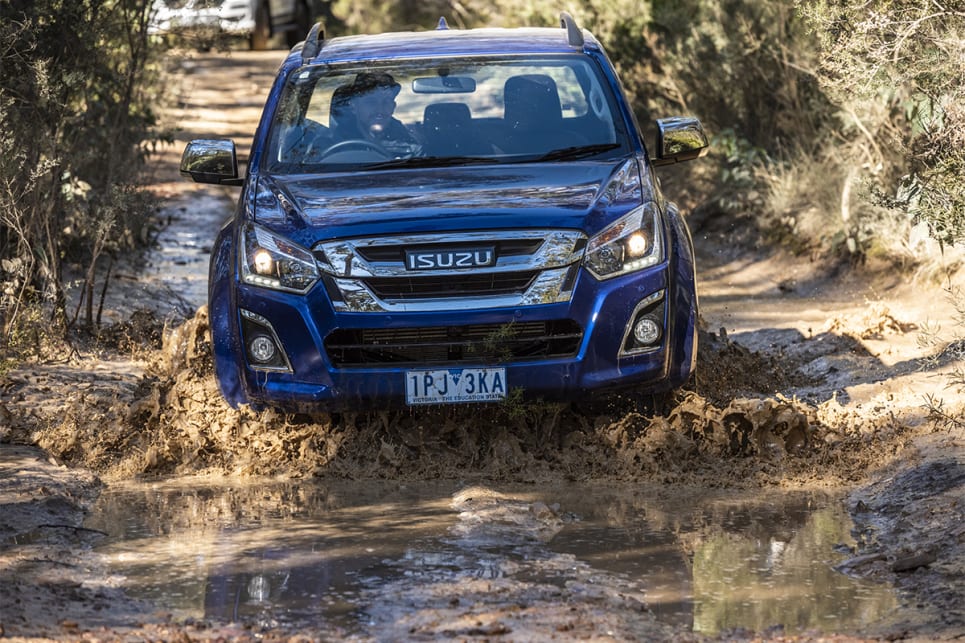 While the D-Max's 3.0-litre engine is a bit trucking noisy and not the torquiest unit here, it is still a decent goer.
While the D-Max's 3.0-litre engine is a bit trucking noisy and not the torquiest unit here, it is still a decent goer.
It worked the hardest of this line-up on what I reckon were easy-to-moderate hill-climbs and downhills, and so it's not a comfortable thing to pilot.
Its steering was heavy – it felt ponderous, it feels every gram of its weight – the engine was noisy, it sometimes scrambled for traction on uphills and lacked controlled momentum on the downhills.
On the plus side, while the D-Max's 3.0-litre engine is a bit trucking noisy and not the torquiest unit here, it is still a decent goer, and this ute's suspension was pretty good, soaking up serious potholes and wheel ruts, even at low speeds.
All of these utes could be swiftly transformed into much more effective off-road trucks with better tyres, aftermarket suspension and diff locks (if they don't already have them).
| Model | Score |
| Ford Ranger XLT Bi-turbo | 8 |
| Holden Colorado Z71 | 7 |
| Isuzu D-Max LS-T | 6 |
| Mitsubishi Triton GLS Premium | 7 |
| Nissan Navara N-Trek | 8 |
| Toyota HiLux SR5 | 9 |



